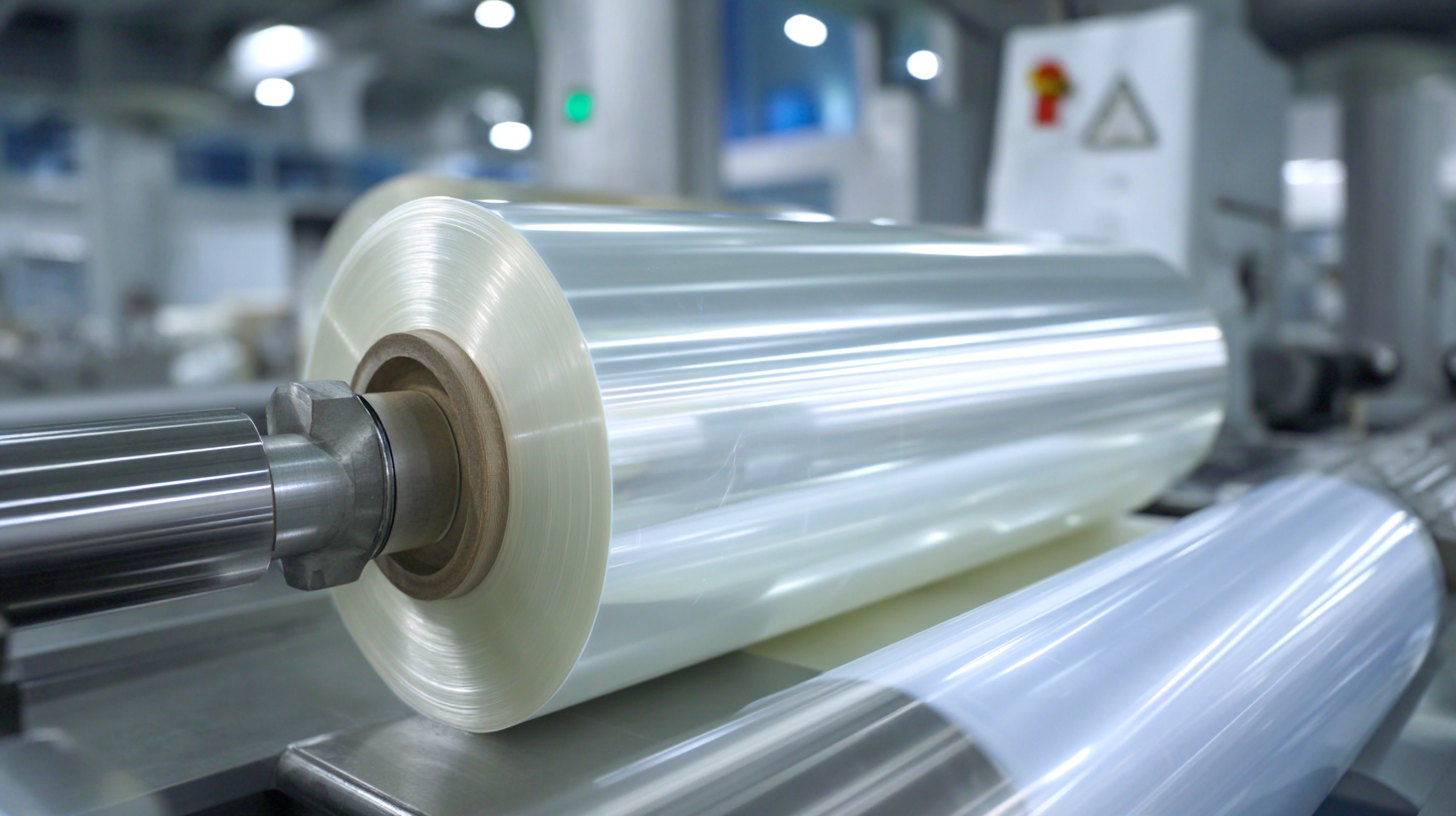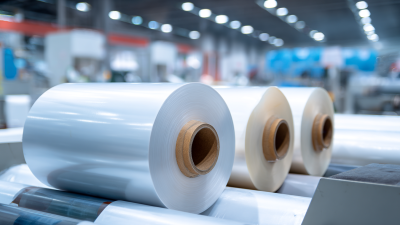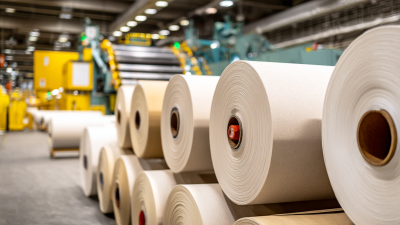The rise of shrink film in the packaging industry has revolutionized the way products are secured and presented, greatly enhancing packaging efficiency. According to a report by Smithers Pira, the global shrink film market was valued at approximately $7.2 billion in 2021 and is projected to reach $10.8 billion by 2026, reflecting a compound annual growth rate (CAGR) of 8.5%. This rapid growth can be attributed to the increasing demand for robust and versatile packaging solutions that shrink film offers. Known for its ability to conform tightly around products, adhering securely during transit, shrink film minimizes product damage and maximizes shelf appeal. Additionally, its lightweight nature contributes to reduced shipping costs, making it an essential choice for manufacturers and retailers alike. As sustainability becomes a key focus in packaging, the adaptability and efficiency of shrink film present it as a frontrunner in the evolution of modern packaging practices.

Shrink film is a versatile packaging material that plays a crucial role in maintaining the integrity and efficiency of product packaging. Made from materials such as polyolefin and PVC, shrink film is designed to tightly conform to the shape of the product upon heat application. According to a report by Grand View Research, the global shrink film market is projected to reach USD 12.86 billion by 2025, growing at a CAGR of 4.8%, reflecting its increasing adoption across various industries including food and beverages, pharmaceuticals, and consumer goods.

The unique properties of shrink film, including its clarity, strength, and resistance to moisture and punctures, make it an ideal choice for securing and displaying products. The film shrinks to fit tightly around the item, ensuring that it is protected from environmental factors and potential damage during transport. Moreover, data from the Flexible Packaging Association suggests that flexible packaging, which includes shrink films, can reduce waste by up to 50% compared to rigid packaging options, showcasing how shrink film contributes to more sustainable packaging practices and enhances packaging efficiency in logistics.
In the rapidly evolving pet food industry, the integration of innovative and intelligent packaging solutions is becoming a pivotal trend. Brands are increasingly recognizing the need to provide engaging and memorable experiences for both pets and their owners. Shrink film packaging is among the standout innovations, enhancing packaging efficiency while also increasing consumer appeal. The global shrink film market is projected to witness significant growth, driven by its effectiveness in protecting products while ensuring visual appeal.
One key advantage of shrink film is its ability to conform tightly around products, offering excellent protection from external factors such as moisture and contamination. According to industry reports, the shrink packaging market is expected to grow steadily, reflecting its adoption across various sectors, including pet food. This growth aligns with the broader market trends, where the folding carton packaging market is also anticipated to rise from approximately $177.91 billion in 2024 to $274.98 billion by 2033, with a compound annual growth rate of 4.5% during the forecast period.
Tips: When choosing packaging for pet food, consider options that not only protect the product but also enhance the brand's visual identity. Additionally, utilizing materials like shrink film can significantly cut down packaging waste while improving shelf presentation—key factors that attract eco-conscious consumers in today’s market.
| Aspect | Details |
|---|---|
| Material Composition | Polyolefin, PVC, Polyethylene |
| Shrink Ratio | 50% to 75% shrinking capability |
| Applications | Food packaging, retail products, medical supplies |
| Benefits | Cost-effective, tamper-evident, environmentally friendly options |
| Environmental Impact | Recyclable materials, reduced waste |
| Market Growth | Projected annual growth rate of 5.5% |
Shrink film is a versatile packaging solution that relies on the principles of heat application to achieve its effectiveness. When heat is applied, the polymer molecules within the film become excited and contract, resulting in a tight fit around the packed product. This process occurs at specific temperatures, typically between 250°F to 400°F, depending on the type of shrink film used, such as PVC, polyolefin, or polyethylene. The ability of shrink film to conform to various shapes not only enhances its protective qualities but also improves aesthetic appeal, making it an ideal choice for retail packaging.
The science behind the heat application process involves thermal energy rearranging the molecular structure of the film. As the temperature rises, the polymer chains loosen, allowing them to move freely. Once cooled, these chains revert to a more compact state, locking the film tightly around the item. This unique property not only provides protection from dust, moisture, and tampering but also promotes efficient storage and transportation. By reducing excess packaging material, shrink film makes it possible to optimize space and decrease shipping costs, thereby enhancing overall packaging efficiency in various industries.
Shrink film has emerged as a transformative force across various industries, optimizing packaging processes and enhancing product presentation. In the food and beverage sector, shrink film is utilized to securely wrap products, extending shelf life while providing a tamper-evident seal. This not only helps in maintaining freshness, but also in presenting a professional look that attracts consumers, ultimately driving sales.
In the pharmaceutical industry, shrink film plays a crucial role in ensuring the integrity of products. Its ability to conform tightly around bottles and blisters protects medicines from contamination and damage, while also providing clear visibility for branding and instructions. Additionally, the cosmetics industry benefits from shrink film's versatility, using it for multi-pack bundles that enhance product visibility and appeal while promoting eco-friendly packaging solutions. These innovative applications illustrate the significant impact shrink film has on operational efficiency and marketability across diverse sectors.
 Shrink film has revolutionized packaging efficiency in various industries, offering sustainable solutions that address modern environmental concerns. According to a 2021 market analysis by Smithers Pira, the global shrink film market is expected to reach $6.09 billion by 2026, fueled by an increasing demand for flexible packaging materials. This trend is largely driven by the film's ability to tightly conform to products, minimizing excess material and enhancing the overall aesthetic appeal of packaged goods.
Shrink film has revolutionized packaging efficiency in various industries, offering sustainable solutions that address modern environmental concerns. According to a 2021 market analysis by Smithers Pira, the global shrink film market is expected to reach $6.09 billion by 2026, fueled by an increasing demand for flexible packaging materials. This trend is largely driven by the film's ability to tightly conform to products, minimizing excess material and enhancing the overall aesthetic appeal of packaged goods.
In addition to efficiency, shrink film contributes significantly to sustainability efforts. The use of polyethylene and biodegradable alternatives in modern shrink films has made it possible to reduce waste and improve recyclability. Data from the Flexible Packaging Association reveals that flexible packaging, which includes shrink film, uses 70% less material than rigid alternatives while still protecting products effectively. This reduction in material not only cuts costs but also decreases the carbon footprint associated with production and transportation, making shrink film a key player in advancing eco-friendly packaging solutions.






